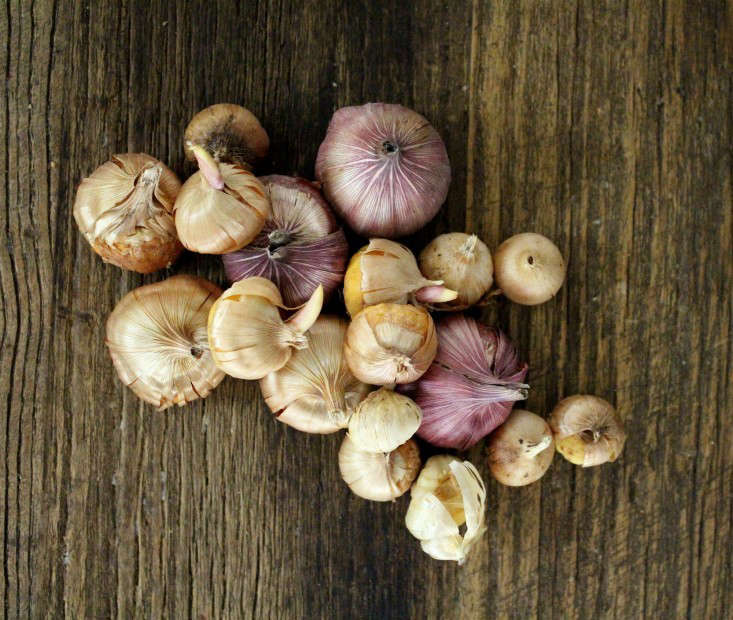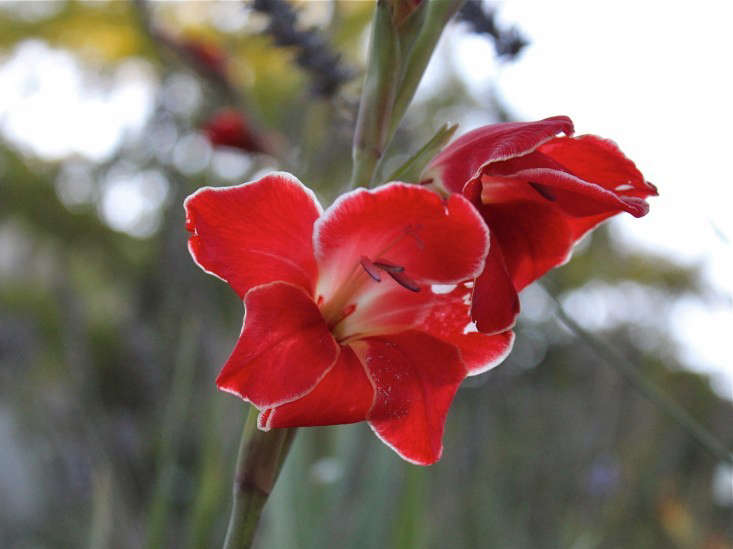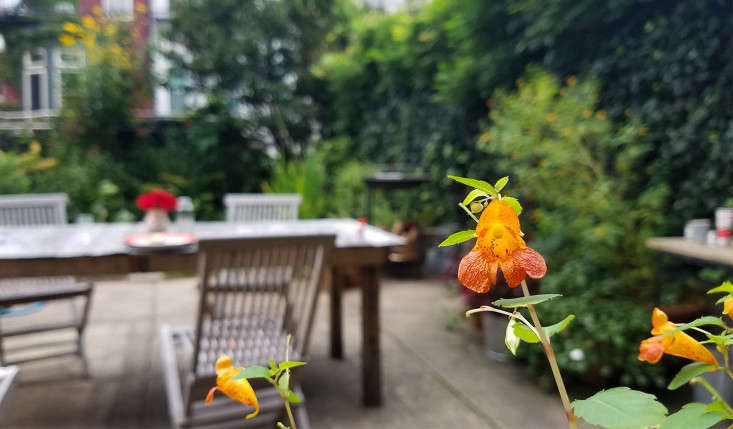For many years I was one of those haters who thought of gladioli as garish sprays of out-of-control color. Little did I know it wasn’t the flowers’ fault; Gladiolus, like fast food, got super-sized over the past few decades.
It turns out that the gaudy hybrids we see today have no relation whatsoever to the old-fashioned varieties that my grandmother—and probably yours—prized in her garden. Heirloom varieties of gladiolus (the ones that were popular in the 19th century and the first half of the 20th) are delicate wands of color in the garden, each flower unfurling like a ribbon on a fragile stem.
To get over my phobia, last year I decided to grow heirloom glads in my own garden. Scott Kunst of Old House Gardens (who specializes in hunting down, nurturing, and selling the very best old-fashioned varieties) suggested some to try—and then mailed me a few brown paper bags of bulbs to test.
The result? I have a new favorite flower, and its name is Gladiolus ‘Atom’. Read on to see why:
Photography by Michelle Slatalla.
Above: ‘Atom’ debuted in 1946 and in my garden in northern California (in USDA Growing Zone 10W) it was a diminutive front-of-the-border charmer. A bag of five Gladiolus ‘Atom’ bulbs is $5.25 from Old House Gardens.
Says Old House Gardens: “Hummingbirds love it, and petite, jewel-like—’Atom’ may forever change the way you look at glads! A primulinus glad with flowers half the size of most, it melds easily into perennial borders and bouquets. It won’t get lost, though, because it’s a brilliant red cooled by the finest edging of silver. It’s our best-selling glad year after year.”
Above: Heirloom gladiolus bulbs come in different sizes and colors.
Above: In my garden, ‘Atom’ first appeared as a purply, tight spike.
Above: An early setback. Score: Deer 1, Michelle 0. If your garden isn’t fenced or patrolled by armed guards, be sure to spray gladiolas with organic Deer Stopper ($14.99 from Amazon).
Above: Coated with Deer Stopper spray, ‘Atom’ took its time to flower. Here I think it looks like an origami crane emerging from the earth.
Above: The weight of the blossoms-to-come bent the stem for a few days.
 Above: But then the stem toughened up, and as the flowers began to unfurl, straightened proudly.
Above: But then the stem toughened up, and as the flowers began to unfurl, straightened proudly.
Above: Lipstick-red petals, outlined for emphasis in pearly white, appeared on a stalk that reached a height of about 2.5 feet in my garden. (After the flower opened, I gave it an extra spritz of Deer Stopper.)
If you grow ‘Atom’—or any other heirloom glad—please let me know the results. I would love to see how ‘Atom’ looks in other gardens.

















Have a Question or Comment About This Post?
Join the conversation